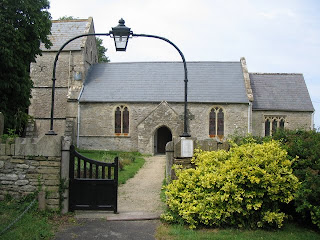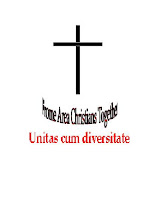Hugh O'Flaherty - Roman Catholic - Priest (28 February, 1898 – 30 October, 1963)
Hugh O'Flaherty was born in Lisrobin, Kiskeam, County Cork, Ireland and studied theology at the Killarney seminary. He was posted to Rome in 1922 to finish his studies and was ordained on 20 December, 1925. He stayed to work for the Holy See, serving as a Vatican diplomat in Egypt, Haiti, Santo Domingo and Czechoslovakia. In 1934, O'Flaherty received the title of Monsignor. In addition to his priestly duties, he was an amateur golfing champion. He was also a champion boxer and a good handball player and hurler.
Hugh O'Flaherty was born in Lisrobin, Kiskeam, County Cork, Ireland and studied theology at the Killarney seminary. He was posted to Rome in 1922 to finish his studies and was ordained on 20 December, 1925. He stayed to work for the Holy See, serving as a Vatican diplomat in Egypt, Haiti, Santo Domingo and Czechoslovakia. In 1934, O'Flaherty received the title of Monsignor. In addition to his priestly duties, he was an amateur golfing champion. He was also a champion boxer and a good handball player and hurler.
In the early years of World War II, O'Flaherty toured prisoner of war camps in Italy and tried to find out about prisoners who had been reported missing in action. If he found them alive, he tried to reassure their families through Vatican Radio. When Italy changed sides in 1943, thousands of British POWs were released. Some of them, remembering visits by O'Flaherty, reached Rome and asked him for help. Others went to the Irish legation, the only English-speaking one to remain open in Rome during the war. Delia Murphy, who was the wife of the ambassador and in her day a well-known ballad singer, was one of those who helped O'Flaherty. O'Flaherty did not wait for permission from his superiors. He recruited the help of other priests, two agents working for Free French and even Communists and a Swiss count. One of his aides was British Colonel Sam Derry. He also kept contact with Sir D'Arcy Osborne, British Ambassador to the Vatican. O'Flaherty and his allies concealed 4000 escapees - Allied soldiers and Jews - in flats, farms and convents. One of the hideouts was beside the local SS headquarters. O'Flaherty coordinated all this and when he was visiting outside the Vatican, he wore various disguises. The German occupiers of Rome tried to stop him and eventually they found out that the leader of the network was a priest. SS attempts to assassinate him failed. They found out his identity, but could not arrest him inside the Vatican. When the German ambassador revealed this to O'Flaherty, he began to meet his contacts on the stairs of the St. Peter's Basilica. Several others, including priests, nuns and lay people, worked in secret with Msgr. O'Flaherty, and even hid refugees in their own private homes around Rome. Among these were Augustinian Maltese Fathers, Egidio Galea, Aurelio Borg, Ugolino Gatt and Brother Robert. Another person who contributed significantly to this operation was the Malta-born widow Chetta Chevalier, who hid some refugees in her house with her children, and was lucky to escape detection. Jewish religious services were conducted in the Basilica di San Clemente under a painting of Tobias - the Basilica was under Irish diplomatic protection. When the Allies arrived in Rome in June 1944, 3925 of the escapees were still alive. O'Flaherty demanded that German prisoners be treated properly as well. He took a plane to South Africa to meet Italian POWs and to Jerusalem to visit Jewish refugees. Of the 9,700 Jews in Rome, 1,007 had been shipped to Auschwitz. The rest were hidden, 5,000 of them by the official Church - 3,000 in Castel Gandolfo, 200 or 400 (estimates vary) as "members" of the Palatine Guard and some 1,500 in monasteries, convents and colleges. The remaining 3,700 were hidden in private homes.
After the war, O'Flaherty received a number of awards, including the CBE and the US Medal of Freedom with Silver Palm. He refused to use the lifetime pension Italy gave him. He visited his old nemesis, the once SS chief of Rome, Colonel Herbert Kappler, in prison, month after month (he was said to have been his only visitor). In 1959, Kappler converted to Catholicism.
Jim Elliot - Baptist - Layman and Missionary (October 8, 1927 – January 8, 1956)
Jim Elliot was born in Oregon to parents Fred and Clara Elliot - known as the "dynamic duo". Fred was of Scottish heritage; his grandparents were the first of his family to settle in North America. Clara's parents moved near the turn of the 20th century from Switzerland to eastern Washington, where they operated a large and successful ranch. They met in Portland, where Clara was studying to be a chiropractor and Fred, having devoted himself to Christian ministry, was working as a traveling preacher in a small Baptist church. After two years of correspondence, they were married in 1918. Robert, their first child, was born in 1921 while they were living in Seattle, and he was followed by Herbert, Jim, and Jane, all three of whom were born after the family moved to Portland.[1] Jim Elliot's parents firmly subscribed to Christian beliefs, and they raised their children accordingly, taking them to church and reading the Bible regularly. Elliot professed faith in Jesus at the age of six and grew up in a home where obedience and honesty were strictly enforced. The Elliot parents encouraged their children to be adventurous.
In Autumn of 1945, Elliot entered Wheaton College, a private Christian college in Illinois, believing that God had led him there. He saw his time there as an opportunity to grow spiritually, develop discipline, and prepare for future missions work.
Elliot arrived in Ecuador on February 21, 1952, with the purpose of evangelizing Ecuador's Aucas Indians. They first stayed in Quito studying Spanish, and then moved to the jungle. They took up permanent residence at the Shandia mission station. On October 8, 1953, he married fellow Wheaton alumna and missionary Elisabeth Howard. The wedding was a simple civil ceremony held in Quito. Ed and Marilou McCully were the witnesses. The couple then took a brief honeymoon to Panama and Costa Rica, then returned to Ecuador. Their only child, Valerie, was born February 27, 1955. While working with the Quichua Indians, Elliot began preparing to reach the violent Huaorani Indian tribe which were known at the time as the Aucas.
He and four other missionaries, Ed McCully, Roger Youderian, Pete Fleming, and their pilot, Nate Saint, made contact from their airplane with the Huaorani Indians using a loudspeaker and a basket to pass down gifts. After several months, the men decided to build a base a short distance from the Indian village, along the Curaray River. There they were approached one time by a small group of Huaorani Indians and even gave an airplane ride to one curious Huaorani whom they called "George" (his real name was Naenkiwi). Encouraged by these friendly encounters, they began plans to visit the Huaorani, without knowing that George had lied to the others about the missionaries' intentions. Their plans were preempted by the arrival of a larger group of 10 Huaorani warriors, who killed Elliot and his four companions in a sudden and brutal attack on January 8, 1956. Elliot's mutilated body was found downstream, along with those of the other men, except that of Ed McCully
Jim Elliot - Baptist - Layman and Missionary (October 8, 1927 – January 8, 1956)
Jim Elliot was born in Oregon to parents Fred and Clara Elliot - known as the "dynamic duo". Fred was of Scottish heritage; his grandparents were the first of his family to settle in North America. Clara's parents moved near the turn of the 20th century from Switzerland to eastern Washington, where they operated a large and successful ranch. They met in Portland, where Clara was studying to be a chiropractor and Fred, having devoted himself to Christian ministry, was working as a traveling preacher in a small Baptist church. After two years of correspondence, they were married in 1918. Robert, their first child, was born in 1921 while they were living in Seattle, and he was followed by Herbert, Jim, and Jane, all three of whom were born after the family moved to Portland.[1] Jim Elliot's parents firmly subscribed to Christian beliefs, and they raised their children accordingly, taking them to church and reading the Bible regularly. Elliot professed faith in Jesus at the age of six and grew up in a home where obedience and honesty were strictly enforced. The Elliot parents encouraged their children to be adventurous.
In Autumn of 1945, Elliot entered Wheaton College, a private Christian college in Illinois, believing that God had led him there. He saw his time there as an opportunity to grow spiritually, develop discipline, and prepare for future missions work.
Elliot arrived in Ecuador on February 21, 1952, with the purpose of evangelizing Ecuador's Aucas Indians. They first stayed in Quito studying Spanish, and then moved to the jungle. They took up permanent residence at the Shandia mission station. On October 8, 1953, he married fellow Wheaton alumna and missionary Elisabeth Howard. The wedding was a simple civil ceremony held in Quito. Ed and Marilou McCully were the witnesses. The couple then took a brief honeymoon to Panama and Costa Rica, then returned to Ecuador. Their only child, Valerie, was born February 27, 1955. While working with the Quichua Indians, Elliot began preparing to reach the violent Huaorani Indian tribe which were known at the time as the Aucas.
He and four other missionaries, Ed McCully, Roger Youderian, Pete Fleming, and their pilot, Nate Saint, made contact from their airplane with the Huaorani Indians using a loudspeaker and a basket to pass down gifts. After several months, the men decided to build a base a short distance from the Indian village, along the Curaray River. There they were approached one time by a small group of Huaorani Indians and even gave an airplane ride to one curious Huaorani whom they called "George" (his real name was Naenkiwi). Encouraged by these friendly encounters, they began plans to visit the Huaorani, without knowing that George had lied to the others about the missionaries' intentions. Their plans were preempted by the arrival of a larger group of 10 Huaorani warriors, who killed Elliot and his four companions in a sudden and brutal attack on January 8, 1956. Elliot's mutilated body was found downstream, along with those of the other men, except that of Ed McCully











